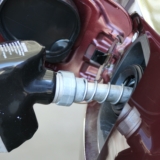Summer Gas Price Increase, Experts Detail What to Expect at the Pump
As summer approaches, Americans are keeping a close eye on gas prices, a perennial concern for road trippers and daily commuters alike. Recent data from AAA shows a national average of $3.46 for a gallon of regular gasoline, a welcome drop from the previous month’s average of $3.62. Compared to last year’s $3.59, the trend suggests a slight easing of the financial burden at the pump.
Despite this modest relief, predicting gas prices remains an intricate dance of economic factors and geopolitical influences. Patrick de Haan, head of petroleum analysis at GasBuddy, forecasts that the national average will hover between $3.25 and $3.75 per gallon throughout the summer. This range is consistent with earlier predictions, offering a degree of predictability amidst the usual volatility. However, de Haan cautions that several “wildcards” could disrupt this equilibrium, leading to temporary price spikes.
One significant factor providing some stability is the state of gasoline inventories and refinery operations. Gasoline inventories are currently about 5% higher than this time last year, and refineries are operating at an impressive 95% utilization rate. This robust supply chain, according to Andy Lipow of Lipow Oil Associates, should ensure adequate gasoline supplies for the upcoming driving season. This bodes well for consumers, suggesting that sudden shortages or significant price jumps may be less likely.
Yet, it’s essential to remain vigilant about the factors that could alter this relatively stable outlook. Global oil prices, driven by complex geopolitics and market speculation, have a direct impact on what Americans pay at the pump. Any escalation in international conflicts, particularly in oil-rich regions, could disrupt supplies and send prices soaring. Additionally, natural disasters, particularly hurricanes, can damage refinery infrastructure and lead to sudden spikes in prices.
Environmental regulations and shifts in consumer behavior also play a role. As more people opt for fuel-efficient vehicles or electric cars, demand dynamics could shift, influencing prices. Conversely, a surge in travel post-pandemic could increase demand and strain supplies, particularly during peak vacation months.
For now, the forecast offers a cautiously optimistic view. With prices expected to remain relatively stable within the predicted range, drivers can plan their summer trips with a bit more financial certainty. However, staying informed about potential disruptions is crucial. Monitoring news about global oil markets and domestic supply chains will help consumers anticipate and adapt to any unexpected changes.
In this ever-fluctuating landscape, the summer of 2024 promises to be a period of manageable but closely watched gas prices. As always, the interplay of supply, demand, and unforeseen events will dictate the final cost at the pump. For now, a national average in the mid-$3 range provides a semblance of stability in an otherwise unpredictable market.





